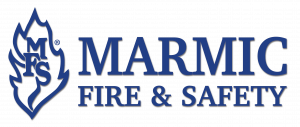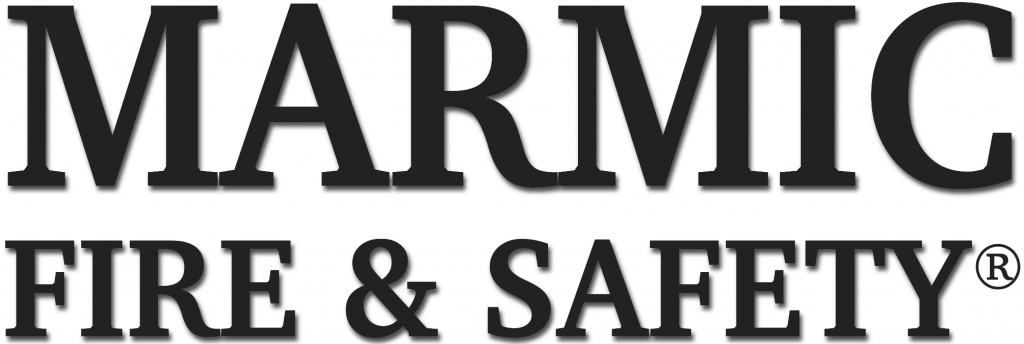What Qualifies Us?
Every day we assist customers with high-occupancy spaces such as public schools, universities, museums, hotels, and sports stadiums. The needs of each can vary greatly. But whether occupants are children, sleepy travelers, or rowdy sports fans, we can help you maintain your fire and life safety plans

How Can We Help?
Solutions
School districts, Division I universities, and popular hotel chains trust us to handle their hundreds of fire extinguishers, fire alarm detectors, and complex fire sprinkler systems… every day. Our NICET-certified technicians can handle the volume as well as the complexity of sprawling campuses.
In addition to fire suppression, Marmic has an electronics division offering fire alarm, security installations, and maintenance to complement its sprinkler and special hazard divisions. Benefit and fulfill all your protective needs from a one-stop-shop provider like Marmic Fire & Safety.
When to Inspect
Every year.
6-Year Maintenance required every 6th year or when damage is suspected (inspection included).
Hydrostatic testing required every 12th year or when damage is suspected (inspection included).
What to Expect
Fire extinguishers corrode and take damage over time and require yearly inspection which is very quick and easy. If inspection is done on site, technicians will also note problems such as blocked access to fire extinguishers.
6-Year Maintenance requires discharging the tank and refilling it.
12-Year Hydrostatic testing requires discharging the tank and submerging it in water to test its integrity. It will be refilled if it passes the test and scrapped if it does not. You’ll need to purchase a new fire extinguisher if it is scrapped.
Push test on function of exit light batteries.
When to Inspect
Every year, typically paired with Fire Extinguisher inspection.
What to Expect
30-second Push Test on function of exit lights. Battery replacement when necessary.
When to Inspect
Every year. Quarterly and even Monthly depending on AHJ and insurance requirements.
5-Year Internal Pipe inspection required every 5 years.
Fire Pump test.
What to Expect
Wet and dry sprinkler inspections are virtually the same with the exception of nitrogen dry pipe systems which may require nitrogen replenishment if repairs are needed. For some high-risk environments, insurers may require quarterly and even monthly inspections which are visual checks of gauges and system readiness. Quarterly and Monthly do not take the place of the yearly inspections.
A 5-year internal pipe inspection will remove a section of pipe to note corrosion and blockage. If blockage is severe, deficiencies are noted and re-piping is necessary.
A fire pump test is conducted to ensure the pump, powered by diesel or electricity, can provide enough pressure to the sprinkler system. A flow test is performed by releasing water, diverted to a suitable location, and taking pressure readings and other measurements.
Backflow preventer testing is a separate inspection typically completed during the sprinkler inspection. It may require more than one technician to inspect if the preventer is set below ground or in a confined space which are more hazardous conditions for the technician.
When to Inspect
Every year, typically paired with Fire Sprinkler system
What to Expect
Backflow inspections are usually conducted with sprinkler inspections, however they don’t have to be. It depends on AHJ requirements which may be tightly regulated. Skipping an inspection and necessary repairs can result in water shut-offs.
Backflows can be above ground or below. Below ground or confined space backflows are more hazardous and require two technicians: one to perform the work and one to monitor the other technician.
When to Inspect
Twice per year.
6-Year Maintenance on tank required every 6th year.
Hydrostatic testing required on tank every 12th year.
What to Expect
The inspection will include fusible link and nozzle cap replacement, among other items, proper function of exhaust fan, adequate coverage, pull station set, smoke and heat detectors, and other areas of concern.
6-Year Maintenance requires discharging the tank and refilling it.
12-Year Hydrostatic testing requires discharging the tank and submerging it in water to test its integrity. It will be refilled if it passes the test and replaced if it does notH
When to Inspect
Twice per year.
Nitrogen Flush every other inspection.
6-Year Maintenance on tank required every 6th year.
Hydrostatic Testing required on tank every 12th year.
What to Expect
The inspection will include fusible link and nozzle cap replacement, among other items, proper function of exhaust fan, adequate coverage, pull station set, and other areas of concern. A nitrogen flush will ensure piping is unobstructed.
6-Year Maintenance requires discharging the tank and refilling it.
12-Year Hydrostatic Testing requires discharging the tank and submerging it in water to test its integrity. It will be refilled if it passes the test and replaced if it does not.
When to Clean
Every quarter year.
What to Expect
Quarterly Hood Cleaning for Kitchen Range Hood fire suppression systems is recommended for heavily used kitchen ranges. Significant grease buildup can interfere with system readiness in between inspections.
When to Inspect
Twice per year. Quarterly is recommended for harsher environments such as mines.
6-year maintenance on tank required every 6th year.
Hydrostatic testing is required on the tank every 12th year.
What to Expect
The inspection and parts replacement depend on the system type and manufacturer. Fire suppression systems using agents such as halon and AFFF (foam) are discontinuing due to environmental impact, but existing systems can still be serviced in certain instances.
6-Year Maintenance requires discharging the tank and refilling it.
12-year hydrostatic testing requires discharging the tank and submerging it in water to test its integrity. It will be refilled if it passes the test and replaced if it does not.
When to Inspect
Every year
Sensitivity test every other year.
What to Expect
The inspection will evaluate smoke and heat detectors, zones, communications, elevator recall (if applicable), and more.
Sensitivity testing will evaluate each sensor to be within its sensitivity range or it will be replaced.
When to Inspect
Every year
Monthly is recommended for frequently used cabinets.
What to Expect
Items in a first aid cabinet have various expiration dates, so replenishment may be needed throughout the year. However, if an item still has time on it then no replacement is necessary.
Adding Building to Your Campus?
NICET-certified designers add fire safety components to new buildings.
Fire Protection in Museums
Special hazards division protects high-value property.
Secure Building Access
Control access to restricted areas inside and outside your buildings.
Get a Quote
When safety and security are needed, there’s no time to waste. Contact us today to get a free quote.
Further Protection
Marmic Fire & Safety is a one-stop safety company. We make your safetly our life’s mission. We equip retail, medical, commercial, and industrial establishments with hazard analysis.



